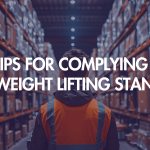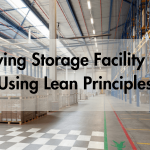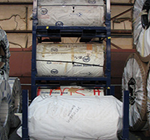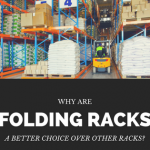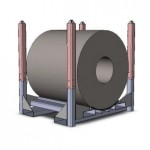The Pros and Cons of Structural Racking vs. Roll Formed Racking Revealed
When it comes to optimizing warehouse storage, the choice between structural racking and roll formed racking can significantly impact a business’s efficiency and bottom line. These two storage solutions offer distinct advantages and drawbacks, each catering to different needs and priorities. In this comprehensive analysis, we delve into the intricacies of structural racking and roll formed racking, unraveling their pros and cons to guide businesses towards the most suitable option for their storage requirements.

Structural Racking
Structural rack, crafted from heavy-duty steel components, stands as a stalwart in the realm of storage solutions. Its robust construction, characterized by welded steel beams and uprights, provides unparalleled strength and durability, making it an ideal choice for high-density storage applications. Thick steel c-channels make up the structural rack, which is more costly but more robust than other pallet rack options. It is most frequently utilized in warehouses with rapid inventory turnover since durability is crucial for withstanding heavy forklift traffic. Let’s explore its merits and limitations in further detail:
Advantages of Structural Pallet Rack
Unmatched Strength: The hallmark of this racking lies in its formidable strength. Constructed from solid steel components, it boasts exceptional load-bearing capacity, rendering it suitable for storing heavy items and enduring rigorous operational demands.
Longevity: Built to withstand the test of time, structural pallet rack are renowned for their longevity. The welded steel construction ensures resistance to wear and tear, offering businesses a reliable storage solution that stands the test of time.
Versatility: Structural racks are highly versatile, accommodating various storage requirements with ease. Customizable with a range of accessories such as wire decking and dividers, they enable businesses to optimize space utilization and streamline inventory management processes.
Resilience to Impact: Thanks to their sturdy construction, structural racks exhibit enhanced resilience to impact from machinery and forklifts. This reduces the risk of damage, ensuring uninterrupted operations even in high-traffic warehouse environments.
Disadvantages of Structural Rack
Higher Initial Investment: The robust materials and construction of structural rack entail a higher upfront investment compared to alternative solutions. While the long-term benefits justify this initial cost, businesses need to carefully consider their budgetary constraints.
Complex Installation: Installing structural rack can be labor-intensive and time-consuming due to the welding and assembly of heavy steel components. This may result in extended downtime during installation or reconfiguration, impacting operational efficiency.
Limited Adjustability: While offering unparalleled strength, structural racks may have limited adjustability compared to other storage solutions. Modifications to the layout may require significant effort and resources, potentially hindering flexibility in adapting to changing storage needs.
Roll Formed Racking
Roll form racking characterized by its modular design and boltless assembly, presents a versatile and cost-effective alternative to structural pallet rack. Crafted from lighter gauge steel, this systems offer flexibility and convenience without compromising on functionality. The teardrop design, a prevalent feature in many systems, enhances the efficiency of assembly and adjustment, making it a popular choice for businesses seeking adaptability in their storage solutions. Let’s explore the merits and limitations in further detail:
Advantages of Roll Formed Racking
Cost-Effective Solution: It boasts lower initial costs compared to structural racking, making it an attractive option for businesses operating within budget constraints. The use of lighter materials and boltless assembly translates to reduced manufacturing and installation expenses.
Ease of Installation: One of the key advantages of roll formed pallet racking lies in its simplicity of installation. The boltless design facilitates quick and straightforward assembly, minimizing downtime and labor costs associated with setup and reconfiguration.
Enhanced Adjustability: Roll form racking offers greater flexibility in configuration compared to structural pallet rack. Components can be easily repositioned or replaced to accommodate changing storage requirements, providing businesses with scalability and adaptability.
Lightweight Design: The lighter weight of roll formed pallet racking makes it easier to handle and transport during installation or relocation. This is particularly advantageous for businesses requiring dynamic warehouse layouts or frequent inventory adjustments.
Advantages of Roll Formed Racking
Reduced Load Capacity: While suitable for most standard storage applications, this racking may have lower load-bearing capacity compared to structural rack. Businesses dealing with exceptionally heavy or bulky items may find structural pallet rack more suitable for their needs.
Susceptibility to Damage: The lighter gauge steel used in roll form racking may be more susceptible to damage from impacts or heavy loads compared to structural rack. While durable, it may require additional maintenance or reinforcement in high-traffic environments.
Limited Longevity: Despite its cost-effectiveness, this racking may have a shorter lifespan compared to structural pallet rack due to its lighter construction. Businesses operating in demanding environments should factor in potential maintenance or replacement costs over time.
Factors Influencing the Choice Between Structural and Roll Formed Racking
When considering the adoption of a storage solution, businesses must carefully evaluate various factors to determine whether structural rack or roll formed pallet rack aligns best with their needs and objectives. Several key factors influence this decision-making process, each playing a crucial role in shaping the efficiency, functionality, and cost-effectiveness of the chosen racking system. Let’s delve into these influential factors:
1. Budgetary Constraints
Budget considerations often serve as a primary determinant in the selection of a racking system. Structural racking, with its robust construction and durable materials, typically entails a higher upfront investment compared to roll formed racking. Businesses operating within tight budgetary constraints may find it more appealing due to its lower initial cost. However, it’s essential to weigh this cost-saving against the long-term benefits and potential maintenance expenses associated with each option.
2. Load Requirements
The nature of the stored inventory and its associated load requirements significantly influences the choice between structural and roll formed racking. Structural rack, with its heavy-duty steel components and superior load-bearing capacity, is better suited for storing heavy items or pallets with substantial weight. Industries dealing with bulky or oversized products may find structural racking indispensable for ensuring the safe and efficient storage of their inventory. Conversely, roll form racking, while suitable for most standard storage applications, may have limitations in handling exceptionally heavy loads. Businesses must assess their specific load requirements and select a racking system capable of meeting those demands without compromising safety or functionality.
3. Operational Environment
The operational environment, including factors such as warehouse layout, traffic flow, and equipment usage, plays a pivotal role in determining the suitability of a racking system. Structural rack’s robust construction and resilience to impact make it well-suited for high-traffic environments where forklifts and other machinery are prevalent. Its ability to withstand rigorous operational demands ensures uninterrupted workflow and minimizes the risk of damage to the racking system. In contrast, roll formed pallet rack may be more susceptible to damage from impacts or heavy loads, particularly in bustling warehouse environments. Businesses must assess the operational conditions and select a racking system that can withstand the rigors of their specific environment while maintaining efficiency and safety standards.
4. Flexibility and Adaptability
The ability to adapt to changing storage needs and inventory requirements is another critical consideration in selecting a racking system. Roll formed pallet rack offers greater flexibility and adjustability compared to structural racking, thanks to its modular design and boltless assembly. Components can be easily reconfigured or replaced to accommodate evolving storage needs, providing businesses with scalability and adaptability. This flexibility is particularly beneficial for industries experiencing fluctuations in inventory size or frequent changes in product dimensions. structural pallet rack, while offering unparalleled strength and durability, may have limitations in terms of adjustability, requiring more effort and resources to modify the layout or configuration. Businesses must evaluate their future growth prospects and select a racking system that can seamlessly adapt to evolving storage requirements without impeding operational efficiency.
5. Long-Term Considerations
In addition to immediate cost considerations, businesses must assess the long-term implications of their choice between structural and roll form racking. While it may offer initial cost savings, structural racking’s durability and longevity can translate into reduced maintenance expenses and a longer lifespan. Businesses operating in industries with demanding storage requirements or prolonged usage may find structural pallet rack more cost-effective in the long run, despite the higher upfront investment. It’s essential to consider the total cost of ownership over the racking system’s lifecycle and weigh the potential benefits against the initial investment to make an informed decision aligned with long-term objectives.
In conclusion, the choice between structural pallet rack and roll formed pallet rack depends on various factors, including budget, storage requirements, and operational preferences. It offers unparalleled strength and durability, making it ideal for heavy-duty applications where longevity and resilience are paramount. On the other hand, roll form racking provides cost-effective solutions with greater flexibility and ease of installation, catering to businesses with evolving storage needs and budget constraints.
Ultimately, businesses must carefully evaluate the pros and cons of each racking system in the context of their specific requirements to make an informed decision that aligns with their long-term goals and objectives. By understanding the distinct features and considerations associated with structural racking and roll formed racking, businesses can optimize their warehouse storage solutions for enhanced efficiency, productivity, and profitability.
About The Author

